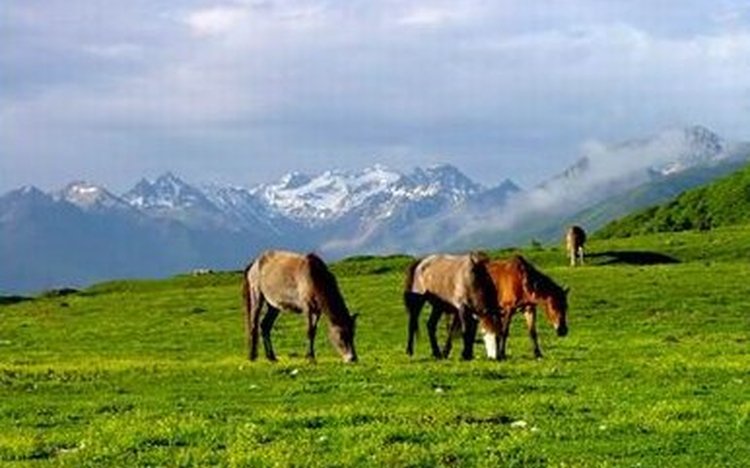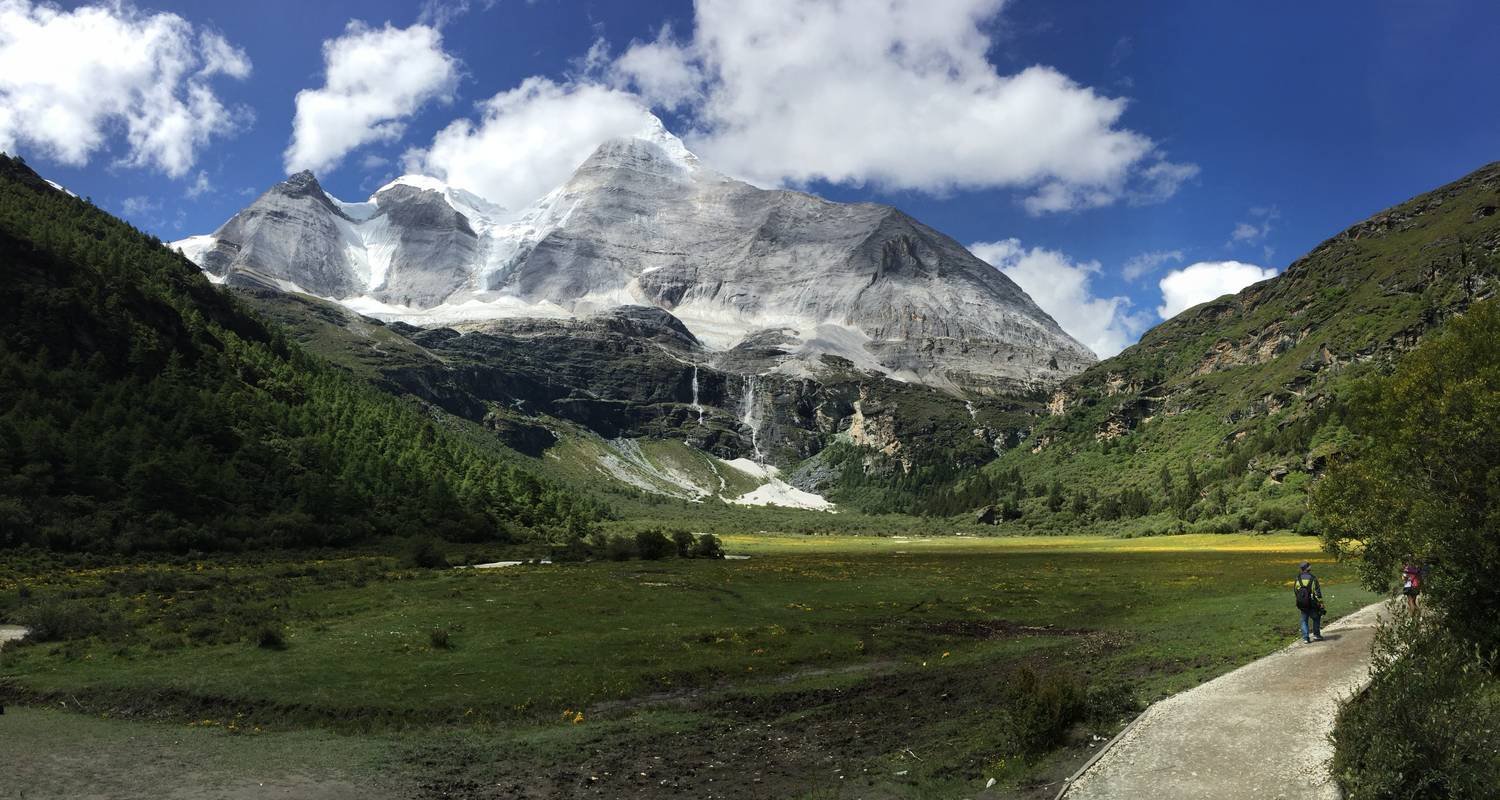Sichuan to Tibet: A Journey Overland Through the Land of Abundance

The journey from Sichuan to Tibet is an epic overland adventure through some of the most breathtaking and culturally rich landscapes on Earth. It is a journey that takes travelers through the heart of the Tibetan Plateau, the highest and largest plateau in the world, and exposes them to the unique culture and traditions of the Tibetan people.

The journey begins in the bustling city of Chengdu, the capital of Sichuan province. Chengdu is a major transportation hub and a gateway to Tibet. From Chengdu, travelers can take a bus or a train to Lhasa, the capital of Tibet. The journey takes about two days by bus and three days by train.

Along the way, travelers will pass through some of the most stunning scenery in the world. The road winds through lush valleys, past towering mountains, and across high-altitude passes. Travelers will also see traditional Tibetan villages, where they can learn about the local culture and customs.
One of the highlights of the journey is the visit to the Potala Palace in Lhasa. The Potala Palace is a UNESCO World Heritage Site and is considered to be one of the most sacred places in Tibet. It was the former residence of the Dalai Lama and is now a museum.
Another highlight of the journey is the visit to Mount Everest, the highest mountain in the world. Mount Everest is located in the Himalayas, on the border between Nepal and Tibet. Travelers can take a trek to Mount Everest Base Camp, which is located at an altitude of 5,364 meters (17,598 feet).
The journey from Sichuan to Tibet is an unforgettable experience that will leave travelers with a profound appreciation for the beauty and diversity of the Tibetan Plateau. It is a journey that is both physically and mentally challenging, but it is also a journey that is incredibly rewarding.
Practical Tips for Traveling from Sichuan to Tibet
- Obtain a Tibet Travel Permit: All foreign travelers must obtain a Tibet Travel Permit before entering Tibet. The permit can be obtained through a travel agency or directly from the Tibet Tourism Bureau.
- Pack Warm Clothing: Tibet is a high-altitude region, and the weather can be cold, even in the summer. Be sure to pack warm clothing, including a jacket, sweater, and a hat.
- Drink Plenty of Water: The air in Tibet is dry, so it is important to drink plenty of water to stay hydrated.
- Be Prepared for Altitude Sickness: Altitude sickness is a common problem for travelers who visit Tibet. Symptoms of altitude sickness can include headache, nausea, vomiting, and shortness of breath. If you experience any of these symptoms, it is important to descend to a lower altitude immediately.
- Respect the Local Culture: Tibet is a culturally rich region, and it is important to respect the local customs and traditions. Be sure to dress modestly, avoid taking photos of people without their permission, and always ask before entering a temple or monastery.Title: Sichuan To Tibet: A Journey Overland Through The Land Of Abundance
Executive Summary:
Tibet, often referred to as “The Roof of the World,” has long captivated travelers worldwide with its stunning natural wonders, rich history, and vibrant culture. This article explores the enthralling journey overland from Sichuan, China, to Tibet. We delve into the diverse landscapes, cultural heritage, and practical aspects of planning and embarking on this remarkable adventure, spanning 2,000 kilometers and offering an unparalleled immersion into the Tibetan Plateau’s unparalleled beauty. Discover the essential stops, cultural experiences, permit requirements, and transportation options that await you along this extraordinary route.
Introduction:
Nestled in the heart of the Himalayas, Tibet is an enigmatic land blessed with breathtaking vistas that include towering mountains, shimmering lakes, and lush forests. Beyond its natural beauty, Tibet’s rich cultural heritage, including ancient monasteries, colorful festivals, and exquisite handicrafts, further enthralls adventurers and culture enthusiasts alike. Our journey begins in Chengdu, the vibrant capital of Sichuan province. As we traverse this ancient trade route, we’ll encounter stunning landscapes, cross high mountain passes, and immerse ourselves in ancient Tibetan traditions.
Diverse Landscapes:
Himalayan Majesty: Towering peaks, lush valleys, and shimmering glaciers define the Himalayan landscapes along the Sichuan-Tibet Highway. Key stops include Kangding, with its stunning views of Mount Siguniang, and Litang, known for its blue sky and vast grasslands.
Sacred Mountains: Along the journey, sacred mountains hold profound significance for Tibetans. Mount Siguniang, with its four majestic peaks, represents four guardian deities. Mount Yala, located near Litang, is revered as the abode of a local protective deity and offers picturesque views.
Cultural Heritage:
Monasteries and Temples: Tibet’s spiritual heritage is deeply intertwined with its physical landscape, with numerous monasteries and temples scattered throughout the region. Visit the renowned Tagong Monastery, renowned for its sacred stupas and intricate murals, and the enigmatic Larung Gar, the largest Tibetan Buddhist institute globally.
Tibetan Festivals: Tibetan festivals offer vibrant displays of the region’s cultural traditions. Attend the annual Horse Racing Festival in Yushu, showcasing the skills of Tibetan horsemen, or immerse yourself in the colorful festivities of the Tibetan New Year.
Practical Considerations:
Permits and Visas: To enter Tibet, foreign travelers must secure a Tibet Travel Permit and a Chinese Visa. It is crucial to plan and apply well in advance, as the process can be time-consuming.
Transportation Options: Traveling from Sichuan to Tibet can be done by private vehicle, public bus, or organized tour. Each option has its benefits, whether it’s the flexibility of a private vehicle, the affordability of public buses, or the convenience of guided tours.
Conclusion:
The journey from Sichuan to Tibet is an extraordinary adventure that offers a profound encounter with nature’s beauty and the richness of Tibetan culture. From the awe-inspiring landscapes to the vibrant cultural heritage, this overland expedition promises to leave an indelible mark on travelers’ souls. While thorough planning and preparation are essential, embarking on this once-in-a-lifetime experience is sure to reward adventurers with memories they will cherish forever.
Keyword Phrase Tags:
- Sichuan to Tibet Overland Journey
- Tibetan Plateau Exploration
- Tibetan Cultural Heritage
- Tibetan Festivals and Traditions
- Tibet Travel Permits and Visas
